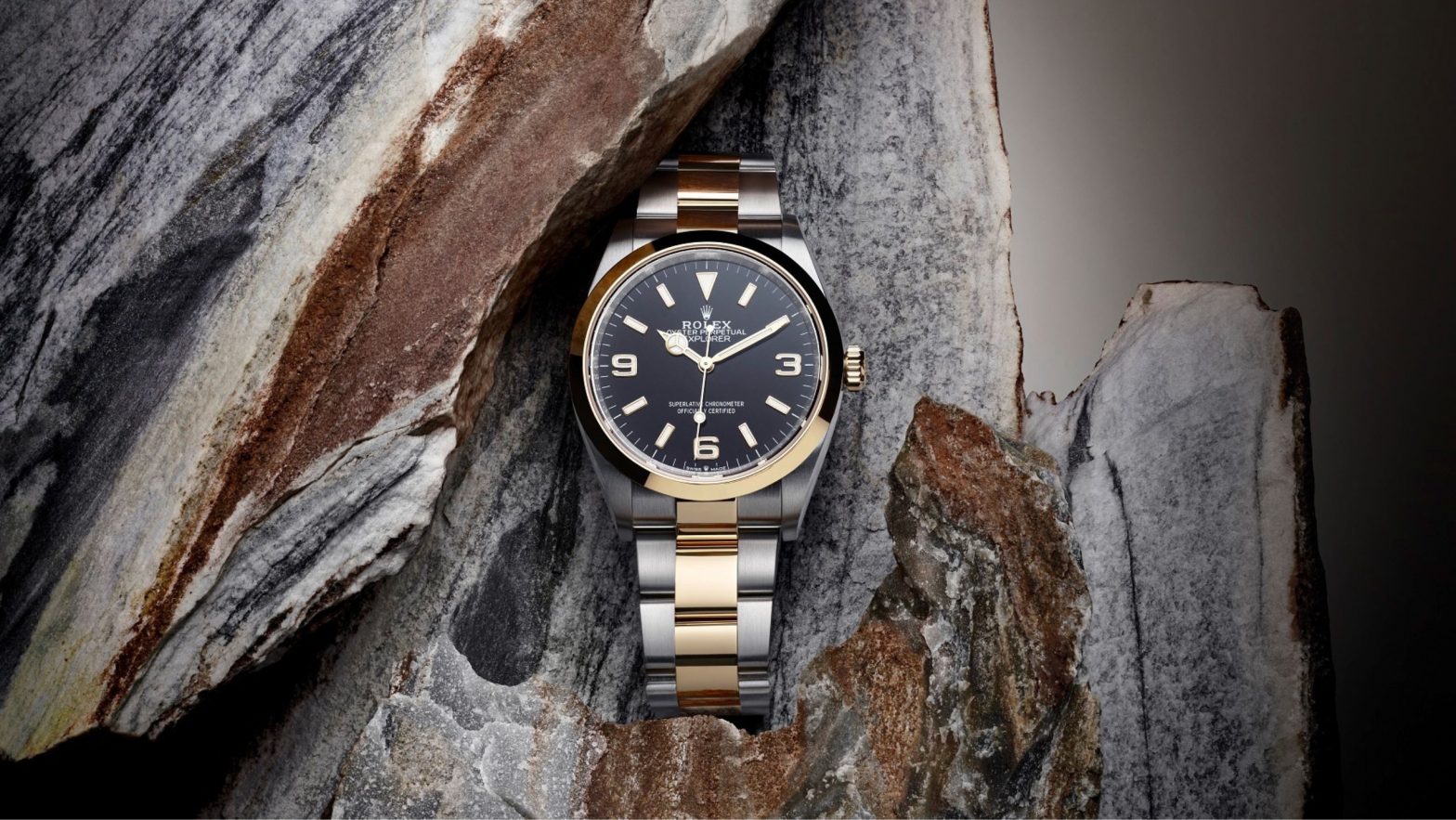From Rolex’s beginnings in the early 20th century, the Swiss brand has always been linked to sports and challenges that have led people to explore nature’s most extreme places, always trying to surpass the limits of their capabilities. Venturing where few dare to go to achieve what seemed impossible is one of the motivations that inspired Hans Wilsdorf to create the world’s first totally waterproof and self-winding wristwatch: the Rolex Oyster Perpetual.
Virtually from the birth of Rolex, it was clear that the exceptional resistance, accuracy and waterproof qualities of Rolex Oyster Perpetual watches made them the perfect companions for great explorations. In 1927, to demonstrate the waterproofness of the Oyster, Hans Wilsdorf gave one to Mercedes Gleitze, a young British woman who was about to make history by swimming across the English Channel. After more than ten hours in the water, the watch continued working perfectly and became a must-have for explorers.
However it had to go above and beyond and Rolex did so in 1953, introducing a new category of watches designed as tools for explorers, able to withstand the most extreme conditions.
Rolex Oyster Perpetual Explorer and Explorer II. Watches designed for exploration
In 1953, one of the great achievements of the 20th century was accomplished: the Everest expedition in 1953, led by Sir John Hunt, in which Sir Edmund Hillary and Tenzing Norgay became the first to reach the summit of the world’s highest mountain. They were all equipped with Oyster Perpetual watches. That same year and a short time after this triumph, the Explorer was launched, embodying the spirit of adventure and perseverance of every expedition.
Rolex Explorer
The Rolex Oyster Perpetual Explorer is a watch-professional tool created to keep time in any conditions. With its simple and elegant design, it stands out for its easily legible black dial with large markers and its characteristically designed 3, 6 and 9 numerals. Even in the dark, its dial is still perfectly legible thanks to Rolex’s exclusive Chromalight technology. On the dial, the markers, numbers and hands are filled or covered with a long-lasting luminescent material (which emits a blue glow) that lasts twice as long as traditional phosphorescent materials.
Rolex Explorer II
In 1971, the Swiss brand went a step further in its privileged relationship with exploration when it introduced the Rolex Oyster Perpetual Explorer II. In keeping with the Explorer’s original spirit, the Explorer II incorporates innovations such as the 24-hour marker with an additional orange hand and an engraved bezel. Thanks to this system, the Explorer II makes it easy to distinguish day from night —a useful option in places where it is difficult to determine whether it is day or night, like in polar regions at some times of the year, or in caves— or display the time in a second time zone. The Explorer II is the must-have watch for speleologists, volcanologists and polar explorers.
Watches created for the most extreme conditions
The link between Rolex and exploration has allowed the Swiss brand’s watches to evolve to best meet the needs of explorers. Thus, generation after generation Oyster Explorer watches have become increasingly reliable and robust. The challenge is great, because in the most extreme environments, time management can be the key to survival.
In order for a watch to be robust, the key lies in the materials with which it is built. Rolex has developed an exclusive steel alloy: Oystersteel is unrivaled in its robustness and its ability to withstand extreme situations. The Rolex Oyster Perpetual Explorer is available in Oystersteel or yellow Rolesor (combination of yellow gold and Oystersteel) while the Rolex Oyster Perpetual Explorer II (8) is crafted only in Oystersteel.
Of course, a wristwatch designed for exploration has to be waterproof. The Oyster case of the Explorer and Explorer II models guarantees waterproof to a depth of 100 meters and has been subjected to the most stringent controls. The Oyster bracelet is also an example of the robustness required by explorers. In addition, it has an Oysterlock safety clasp, developed and patented by Rolex, which prevents accidental opening.
The Swiss brand knows that accurate time management is crucial for exploration. Like all Rolex watches, the Explorer and Explorer II models have Superlative Chronometer certification, which guarantees that they have surpassed the most demanding tests of accuracy in very harsh conditions for any watch.
Thanks to their unique characteristics, the Explorer and Explorer II watches have accompanied a great number of mountaineers, scientists and explorers. Today, many of them are Rolex Testimonees, a vivid example of the cooperation and shared values that characterize Rolex and the world of exploration.


